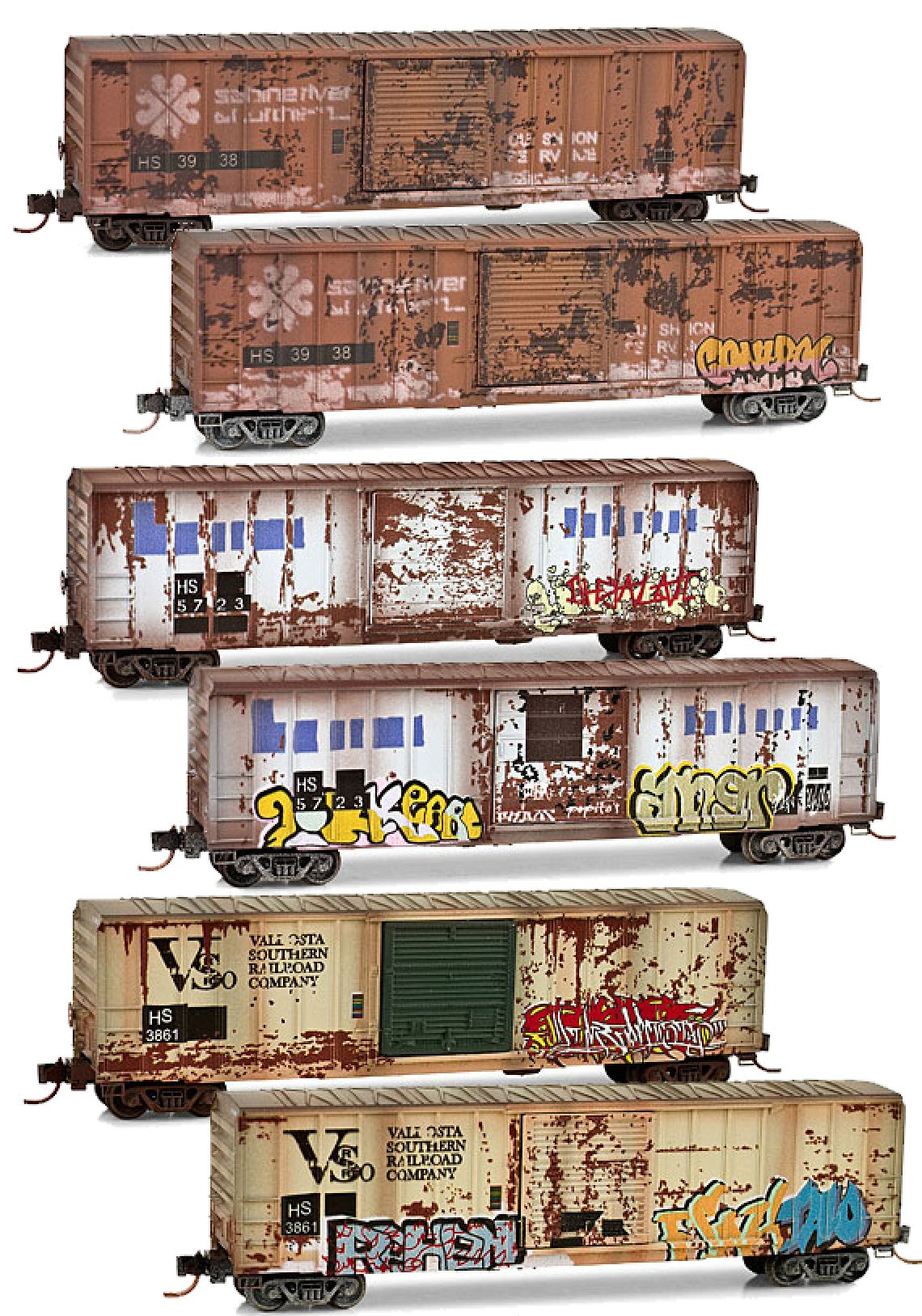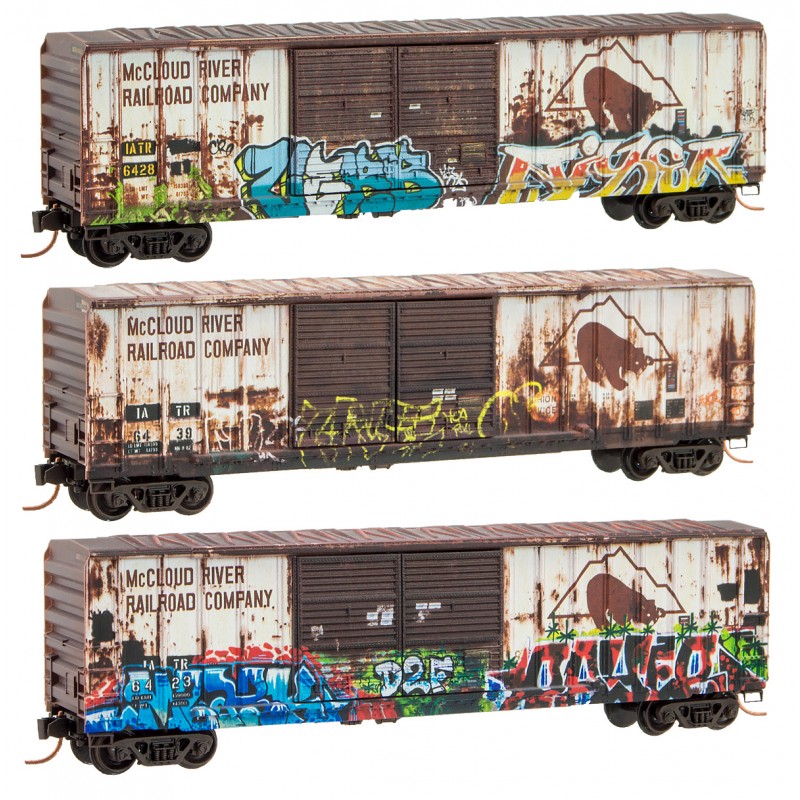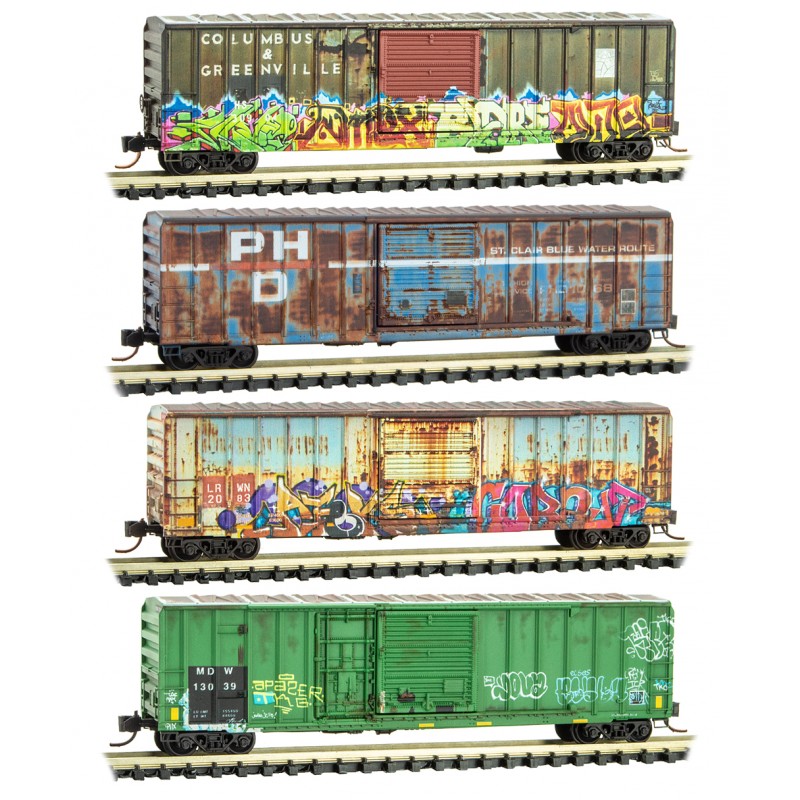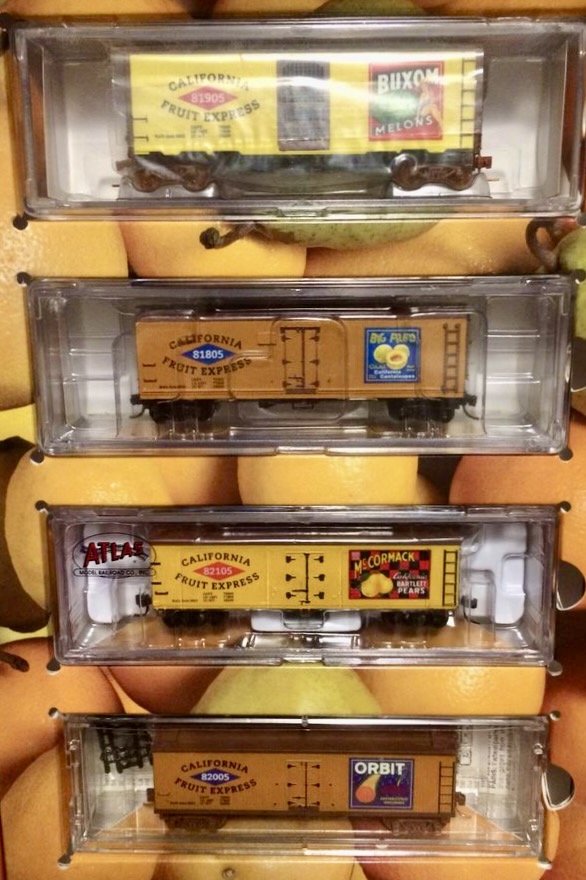Model Information: Many times since Micro-Trains/Kadee first started producing cars in 1972, they have sold 'multipacks' of cars in shrink-wrapped bundles. These releases have bundles several different items with the same theme together in a single shrink-wrapped packaged. However, in April of 2007, due to demand for groups of cars with the same paint scheme yet with different road numbers, the "Runner Pack" was born.
Runner pack number one got a special presentation box instead of simple shrink wrap and contained four different Pennsy boxcars with identical paint schemes yet different road numbers. These releases were intended for people who like to "run" their cars yet like each car to have a different road number. The 4-car runner packs have been very successful and were joined later by 8-car packs as well as 3-packs of larger, more expensive cars. Over 100 different box sets in this series have been produced by MTL as of 2017.
Runner pack number one got a special presentation box instead of simple shrink wrap and contained four different Pennsy boxcars with identical paint schemes yet different road numbers. These releases were intended for people who like to "run" their cars yet like each car to have a different road number. The 4-car runner packs have been very successful and were joined later by 8-car packs as well as 3-packs of larger, more expensive cars. Over 100 different box sets in this series have been produced by MTL as of 2017.
Road Name History: 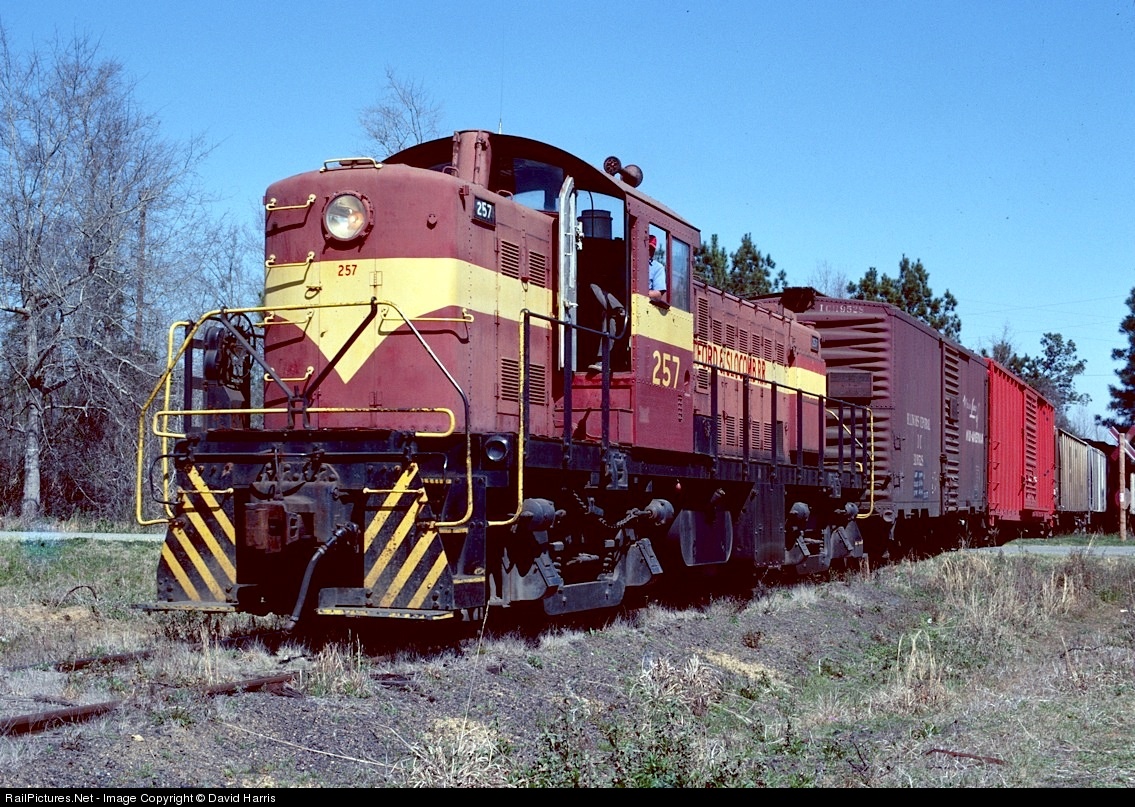 The H&S launched operations in 1954 to take over a Central of Georgia branch from Dothan (a fairly important railroad junction town) to Hartford, in southern Alabama. The route was about 22 miles long.
The H&S launched operations in 1954 to take over a Central of Georgia branch from Dothan (a fairly important railroad junction town) to Hartford, in southern Alabama. The route was about 22 miles long.
In 1975, Itel bought the line. Itel was a major player in the per diem boxcar boom so H&S boxcars became a common sight. The diesel fleet in the Itel years included a pair of RS-1’s and an NW2.
In 1992, the line from Taylor to Hartford was abandoned, leaving just 8 miles. At this point, Itel sold the H&S to the Gulf & Ohio shortline group, who changed the name from Hartford & Slocomb to “H&S Railroad.” A GP7 and SW1 took over the switching chores. The only customer is a large freight car maintenance facility (formerly GE Rail Car.) Itel also sold their entire freight car fleet to GE Rail Car and the “HS” reporting marks went with it. In 2015, GE sold this division to First Union Rail (with their tank car fleet going to Marmon Holdings.) So, when you see an HS car today, it belongs to First Union Rail and not the shortline.
In 2006, G&O sold the H&S to the Genesee & Wyoming shortline group. G&W merged the H&S with the Chattahoochee & Gulf to form the Chattahoochee Bay Railroad.

In 1975, Itel bought the line. Itel was a major player in the per diem boxcar boom so H&S boxcars became a common sight. The diesel fleet in the Itel years included a pair of RS-1’s and an NW2.
In 1992, the line from Taylor to Hartford was abandoned, leaving just 8 miles. At this point, Itel sold the H&S to the Gulf & Ohio shortline group, who changed the name from Hartford & Slocomb to “H&S Railroad.” A GP7 and SW1 took over the switching chores. The only customer is a large freight car maintenance facility (formerly GE Rail Car.) Itel also sold their entire freight car fleet to GE Rail Car and the “HS” reporting marks went with it. In 2015, GE sold this division to First Union Rail (with their tank car fleet going to Marmon Holdings.) So, when you see an HS car today, it belongs to First Union Rail and not the shortline.
In 2006, G&O sold the H&S to the Genesee & Wyoming shortline group. G&W merged the H&S with the Chattahoochee & Gulf to form the Chattahoochee Bay Railroad.
Brand/Importer Information: Micro-Trains is the brand name used by both Kadee Quality Products and Micro-Trains Line. For a history of the relationship between the brand and the two companies, please consult our Micro-Trains Collector's Guide.
Manufacturer Information:  Micro-Trains Line split off from Kadee Quality Products in 1990. Kadee Quality Products originally got involved in N-Scale by producing a scaled-down version of their successful HO Magne-Matic knuckle coupler system. This coupler was superior to the ubiquitous 'Rapido' style coupler due to two primary factors: superior realistic appearance and the ability to automatically uncouple when stopped over a magnet embedded in a section of track. The success of these couplers in N-Scale quickly translated to the production of trucks, wheels and in 1972 a release of ready-to-run box cars.
Micro-Trains Line split off from Kadee Quality Products in 1990. Kadee Quality Products originally got involved in N-Scale by producing a scaled-down version of their successful HO Magne-Matic knuckle coupler system. This coupler was superior to the ubiquitous 'Rapido' style coupler due to two primary factors: superior realistic appearance and the ability to automatically uncouple when stopped over a magnet embedded in a section of track. The success of these couplers in N-Scale quickly translated to the production of trucks, wheels and in 1972 a release of ready-to-run box cars.
Micro-Trains Line Co. split off from Kadee in 1990 to form a completely independent company. For this reason, products from this company can appear with labels from both enterprises. Due to the nature of production idiosyncrasies and various random factors, the rolling stock from Micro-Trains can have all sorts of interesting variations in both their packaging as well as the products themselves. When acquiring an MTL product it is very important to understand these important production variations that can greatly enhance (or decrease) the value of your purchase.
Please consult our Micro-Trains Collector's Guide

Micro-Trains Line Co. split off from Kadee in 1990 to form a completely independent company. For this reason, products from this company can appear with labels from both enterprises. Due to the nature of production idiosyncrasies and various random factors, the rolling stock from Micro-Trains can have all sorts of interesting variations in both their packaging as well as the products themselves. When acquiring an MTL product it is very important to understand these important production variations that can greatly enhance (or decrease) the value of your purchase.
Please consult our Micro-Trains Collector's Guide
Item created by: gdm on 2016-02-19 14:11:00. Last edited by CMK on 2020-06-20 07:31:06
If you see errors or missing data in this entry, please feel free to log in and edit it. Anyone with a Gmail account can log in instantly.
If you see errors or missing data in this entry, please feel free to log in and edit it. Anyone with a Gmail account can log in instantly.


